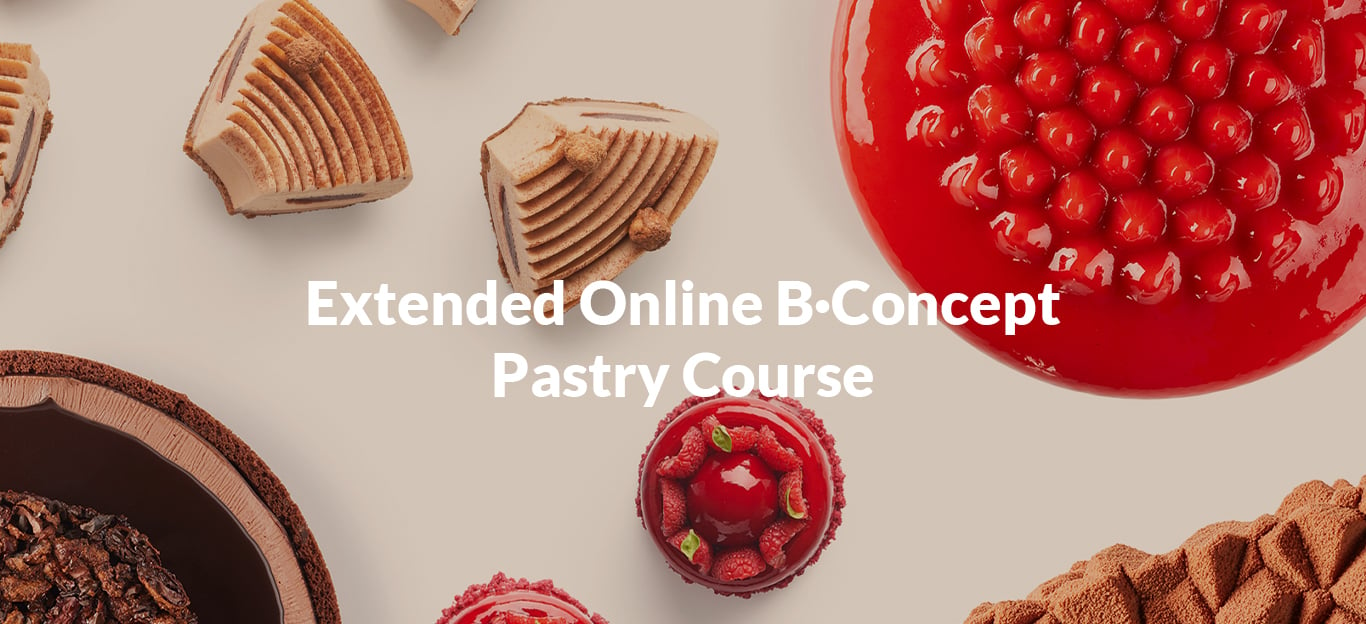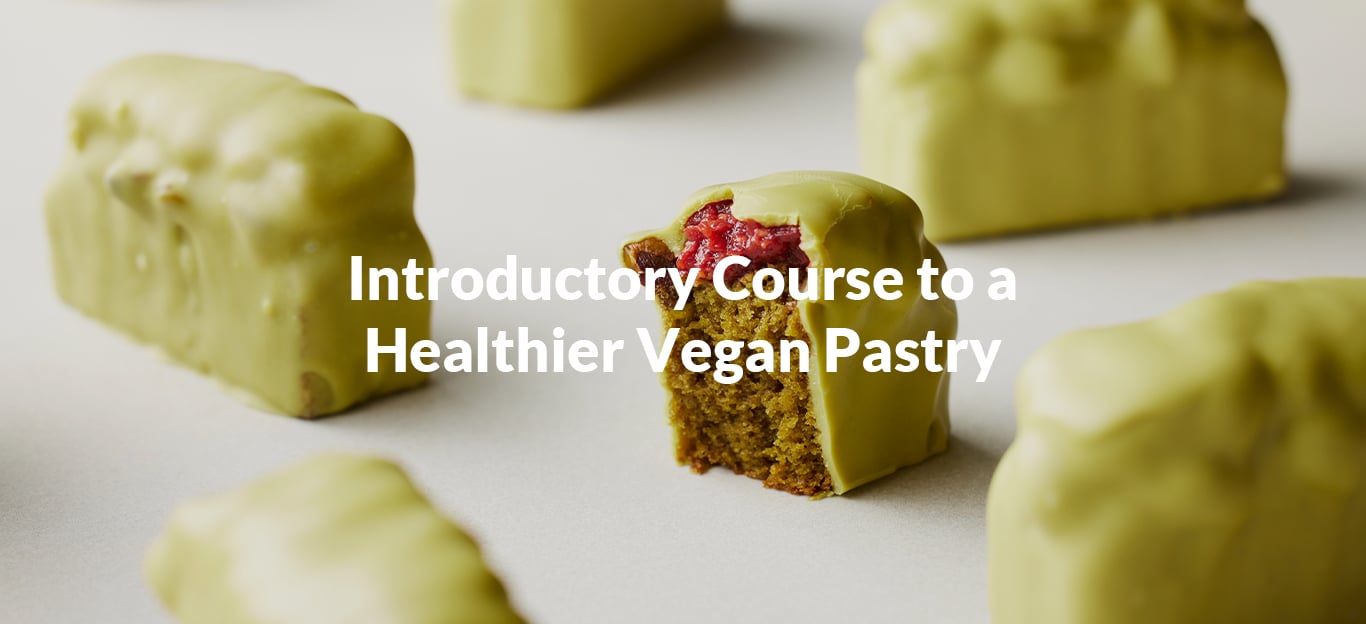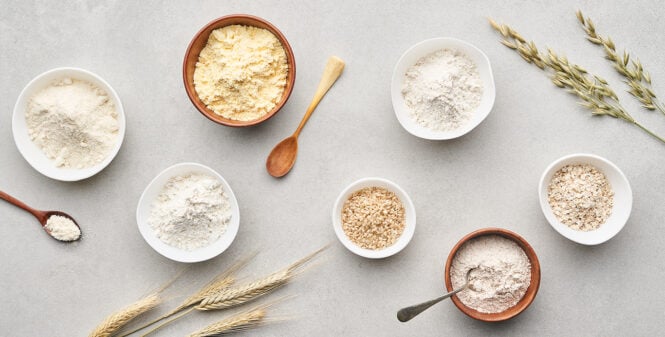
Why my cake leaks water during the freeze/thaw cycle? Let’s talk about syneresis
A very common problem that we might encounter in pastry is the leak of liquid when submitting a cake to the freezing and thawing cycle. When this happens, we tend to think that it is due to a lack of gelatin and we add more quantity to the recipe, but this is not always the reason why. Actually, although the problem may come from a lack of gelation or a too low a concentration of gelling agent, it is most likely due to the overall balance of the recipe. The lack of stability generates the aforementioned leak of water, which in scientific terms is known as the syneresis phenomenon.
In this article we will talk about syneresis. What is it? Why does it happen? How can we avoid it? Also, at the end of the post you will find the rerun of the live masterclass offered by Jordi and Adrianna on October 13. In it, they deepen into all these concepts so that you learn to avoid syneresis during the freezing and thawing cycle and achieve optimal results in your pastry preparations.
What is syneresis in pastry?
Summarizing, syneresis in pastry consists of the expulsion of liquid from a gel. By taking the specific case of an entremets like the ones we work with at Jordi Bordas Pastry School; this water can come from a mousse, from a gelation (for example, a gelled compote), from a creamy or even from the glaze itself.
In the sweet world we can find several types of syneresis. A part from occurring during the freeze/thaw cycle, we may have also observed it, for example, in an overcooked pastry cream; but in this article, we will focus on the first case.
Why does syneresis occur in pastry?
When we submit a gelled texture to the freezing process, a part of controlled water and a certain amount of free water are contained inside it. The first is the water captured or bound by the dry extract and the second is the free water physically trapped within the gel; a three-dimensional net formed by proteins (as in the case of gelatin) or by other gelling agents.
The more free water, the more syneresis will be generated in the freezing and thawing cycle. It is relatively easy to explain why. When changing state and solidifying (going from liquid to solid) in the freezing process, the water increases its volume (usually between 8 and 10%). By increasing the volume, ice crystals formed during the freezing process break the structure of the textures created in the recipes (or the cell walls in when talking of fruits and vegetables), causing syneresis.
Conversely, the greater the amount of water captured by the gelling agent or by polysaccharides (such as fibres), the lower the probability of syneresis. You can learn more about the different molecules in pastry in this article: "Molecules in pastry: the importance of the ingredients molecular composition".
How to avoid syneresis in pastry?
With the above explained, the main concern to avoid syneresis when formulating is always to control the free water in recipes. There are three important factors that must be taken into account to obtain good water control in our pastry recipes: dry extract, water absorption capacity of ingredients and the texture creation techniques that we are going to use in recipe preparation.
DRY EXTRACT
The dry extract in an ingredient or a recipe are all the elements, either liquid or solid, which are not water. Dry extract is the first factor that we need to analyse regarding the stability of a pastry recipe and we must know both the amount of the dry extract, as well as its physicochemical and functional properties. Keep in mind that it is not the same to work with 10% sugar than to do it with 10% fibre, since each of these ingredients will interact differently with the rest.
Usually, pastry recipes need around 30% of dry extract to avoid problems during thaw. This percentage can vary according to the type of recipe and also according to the ingredients used, but it is a good general rule to begin with.
WATER ABSORPTION CAPACITY
Once we know the amount of dry extract in the recipe, we must determine what type of dry extract it is: sugar helps us bind free water, but polysaccharides (a gum or a fibre) have a greater capacity to absorb water.
For example, if a recipe with 25% of the sugar does not perform too well in the thawing process, you can consider substituting part of the sugar with fiber or adding a gum (a thickener) to improve its stability.
TEXTURE CREATION TECHNIQUES
The third critical factor when reviewing recipes are the techniques used. We have four basic pastry techniques to create any texture: emulsification, aeration, thickening and gelling.
For example, if we work a mousse only with aeration and gelation, the recipe will have a lower stability than one worked with emulsification, aeration and gelation. Each technique used helps to generate more stability since what happens internally is that more bonds (links) are created between water molecules and the rest of the molecules. Bonds that will be more difficult to break and, therefore, lower probability of syneresis.
Free pastry masterclass: Why does my cake leak water during thawing?
Finally, you can learn more about all these concepts with the webinar “Why does my cake leak water during thawing?”. It was the first in our B·Concept Pastry Answers series, a cycle of pastry free masterclasses in which we will answer some of the great questions about the sweet world, always from the B·Concept point of view.





